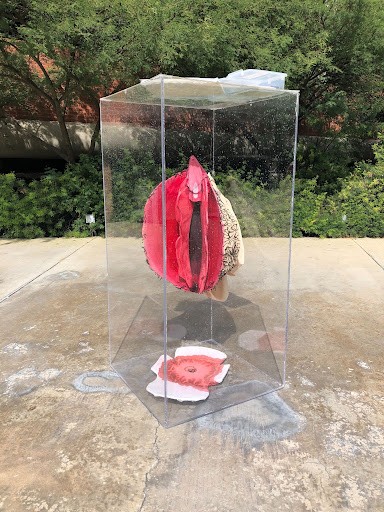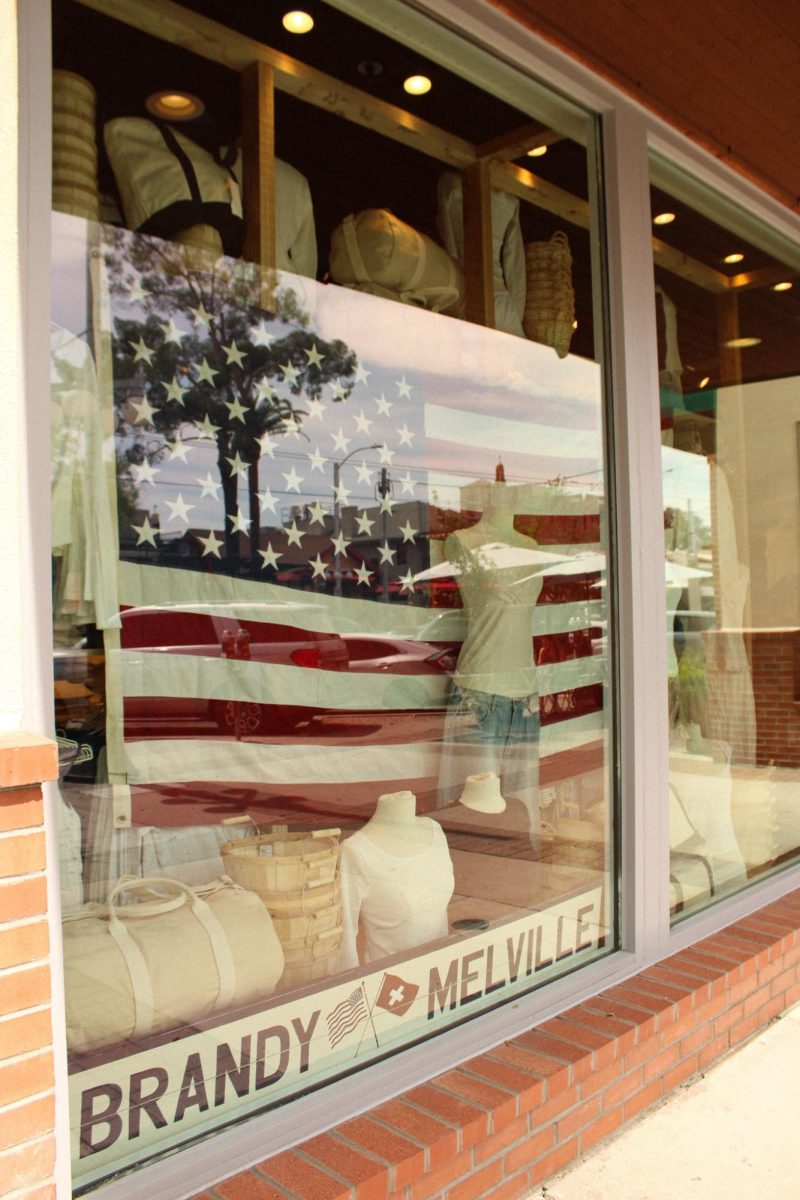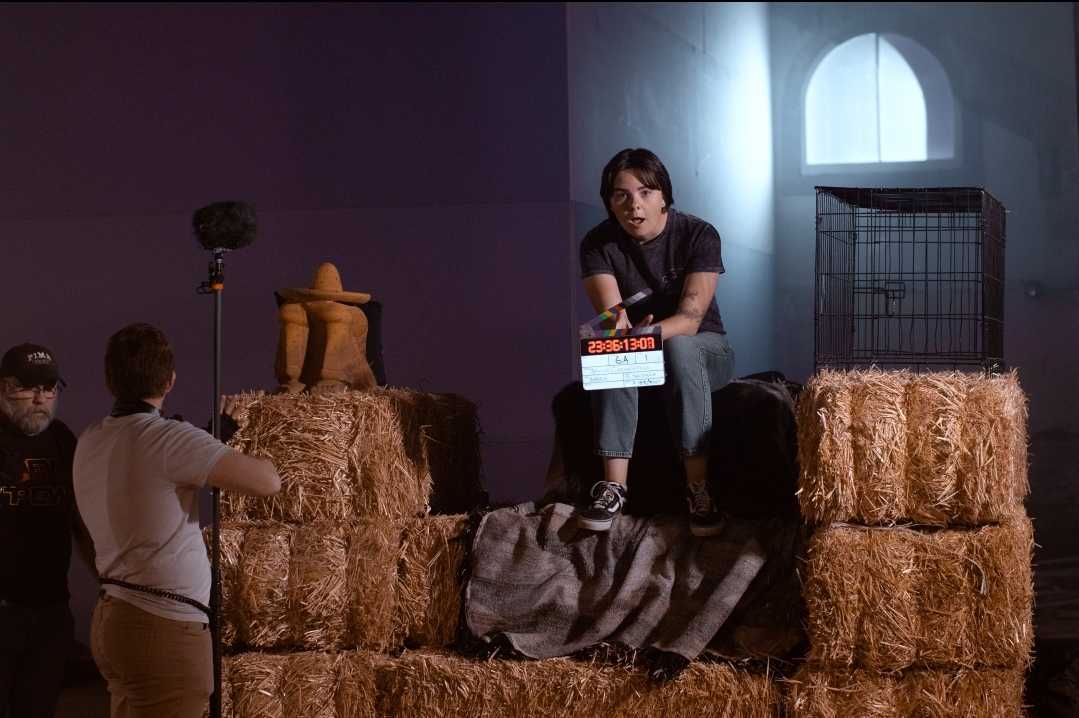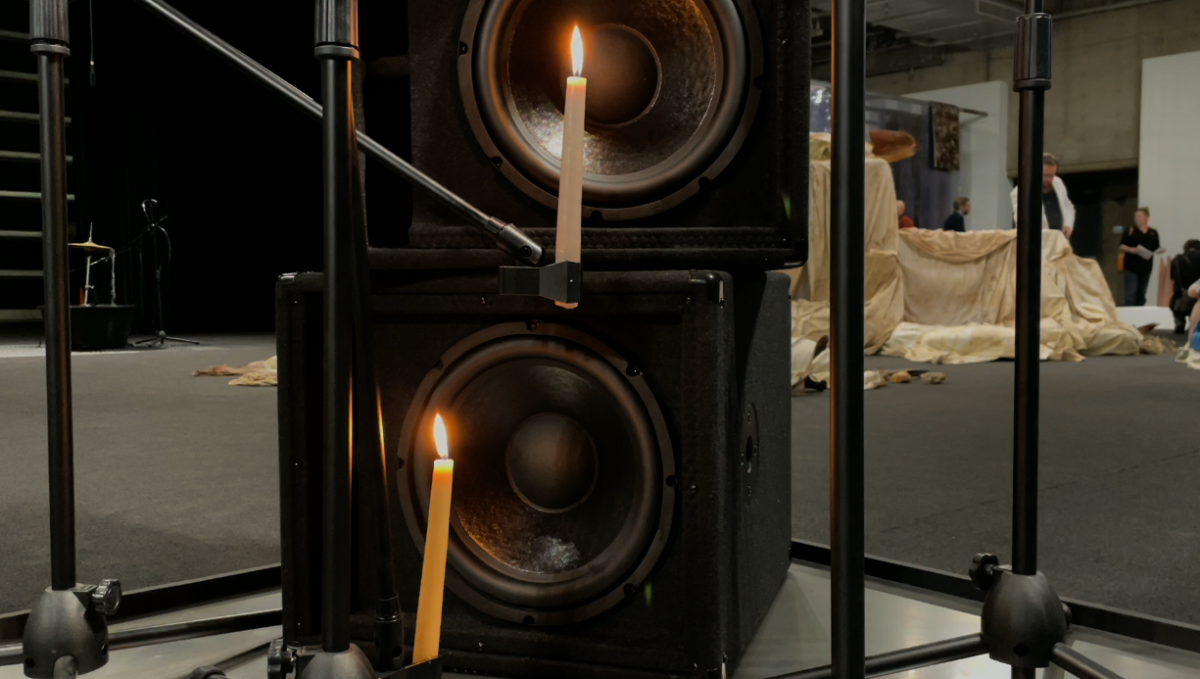As people walked by the Second St. Garage their heads turned as they saw what resembled a vagina. Some of them stopped to check the sculpture while others didn’t want to be peering into a sensitive topic. That was exactly what artist Diana Marie wanted to create with her sculpture: a conversation about menstruation.
Marie, who is majoring in studio art at the University of Arizona College of Fine Arts, was asked to create a project with the premise of time. Therefore, the piece was named “Time of The Month” to describe the menstruation cycle. The sculpture was displayed from Oct. 4 to Oct. 10.
The art piece included dripping fake blood, which lasted around a week to represent the average time a person spends menstruating. Marie wanted to underline the casualness of bleeding.
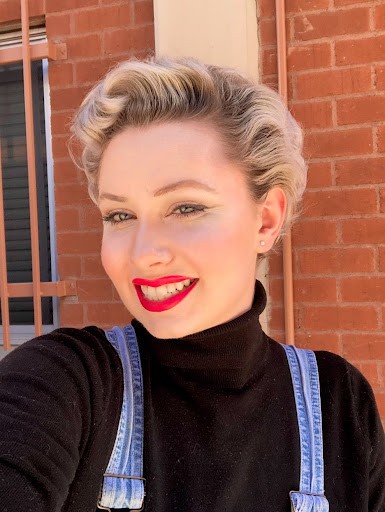
Although Marie focuses on illustration and design, she created this sculpture with a variety of materials. The blood was bottled fake blood and she played around with a valve system to ensure the bleeding would continue all week long. She used foam cardboard, paper mache, spray paint and yarn to create the vagina. The pad, which collected blood, included diaper cloth to represent a true menstrual pad.
Marie used her art as a social experiment to challenge the social stigmas around menstruation. She knew some people would find the display “funny, crude, disgusting, inspiring or daring.”
Marie included response cards asking, “How did this project make you feel?” to get interaction from the public. Would people stop to read the artist’s description and fill out the response cards, or would they rush past to avoid embarrassment?
Marie was surprised at the maturity of the responses with a few exceptions. Multiple people responded with “Horny,” which Marie attributed to the discomfort and immaturity the display may have made people feel. Others said “It made me feel very empowered” giving the artist a sense of importance for the project.
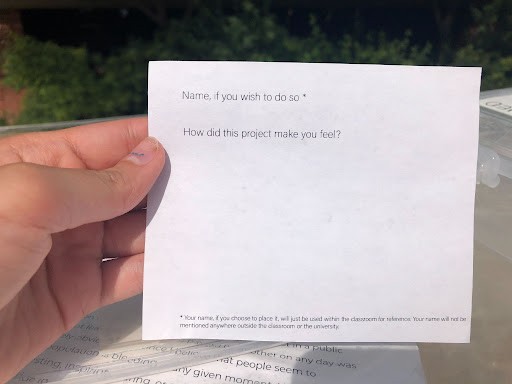
Arizona State Representative Alma Hernandez left Marie a comment saying she “was very happy to see this display as art. The statement was well written and it made me feel seen as a woman.”
The Daily Wildcat spoke to Matt Ritmiller, a UA student, who when passed the sculpture. He said it took him a second to realize what it was. “I just kind of laughed and kept walking to class,” Ritmiller said. He didn’t know what to think.
On the last day, Marie observed students walking by the sculpture. She paid attention to their body language and spoke to those who came up closer to see the seemingly taboo display.
While observing Marie “thought that everyone’s reaction was similar yet unique.” Some would quickly glance and walk away while others would ponder and finally decide to walk over.
RELATED: An inside view of the UA school of dance: alumni and current students talk
According to Marie, The purpose of her sculpture was to reveal and diminish the stigma of menstruation and female sexuality. Marie believes there is never a reason to hide it, “but one thing you should never feel is ashamed about it.”
With her art, Marie wanted to remind people that menstruation is natural. During menstruation, people can experience severe pain, cramping, bleeding and mental issues due to hormonal balances.
Marie recognized her privilege in the ability to not only be someone with resources for menstruation but also an artist who can speak freely on the topic. “I think it speaks for the women that can’t speak and should be able to speak about their own bodies,” said Marie explaining about communities where menstruation remains a highly taboo and sacred topic.
RELATED: Just add water: CEASA, the UA’s controlled environment agriculture club
Access to menstrual hygiene products has been a topic of discussion locally and nationally. Many people who are experiencing poverty or homelessness find it difficult to practice proper hygiene. According to a study by Lauren F. Cardoso on period poverty, “14.2% of women had experienced period poverty ever in the past-year; an additional 10% experienced it every month.”
Marie hopes the conversations produced by her display will also create discussions about health disparities related to menstruation. On Friday, Oct. 8, California’s governor, Gavin Newsom, signed a law requiring public schools to provide free menstrual products in all bathrooms.
Marie is excited to continue with her outlandish projects including a performance piece at Sabino Canyon on Oct. 24. She is creating and wearing a dress that resembles the nature surrounding her for the entire day. Her silence will represent the serenity of the landscape. Follow Diana Marie on Instagram for more information about her art.
Follow Ellen Nangia on Twitter.



